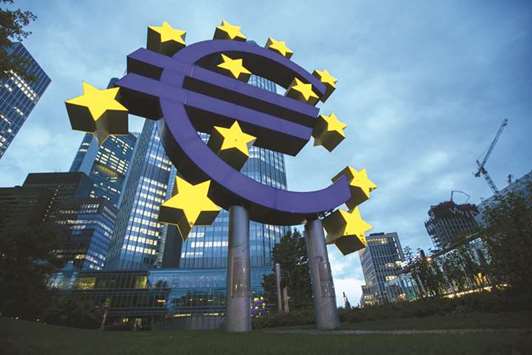The European Central Bank is heading for a two-year leadership overhaul that peaks with the selection of a successor to President Mario Draghi, and it will be politics as much as ability that determines who get the jobs.
Five of the ECB’s seven top posts will be vacated by the end of 2019, starting with vice president Vitor Constancio this June. Among the criteria candidates should bear in mind: being a woman is a plus, and appointing a government minister would break with tradition.
The winners will get to shape policy for a Frankfurt-based institution that almost single-handedly saved the euro during the crisis, and is now deciding how and when to withdraw the stimulus it deployed to fight the recession and pep up the weak economic recovery.
They will also have a say as leaders debate how to strengthen the resilience of the currency bloc against future shocks.
“A big game of musical chairs is going to play out over the next two years as a lot of high-profile positions come up for grabs in the European Union,” said Carsten Brzeski, chief economist at ING-Diba AG in Frankfurt. “What will emerge at the end of this process will have profound consequences for how the ECB goes about tightening its policy.”
The ECB itself gets little say. As usual with European posts, the delicate balance of power between nations will be a decisive element in the selection process as the euro area’s 19 members haggle, cajole and call in favours. But nationality alone won’t be enough.
Spain moved first last month. After a five-year absence from the board, which designs and implements monetary policy, Prime Minister Mariano Rajoy said his administration will put forward a candidate to replace 74-year-old Portuguese national Constancio.
While Finance Minister Luis de Guindos – previously executive chairman of the Spanish and Portuguese operations of Lehman Brothers Holdings Inc, right up to the US bank’s collapse in 2008 – is widely tipped to be the government’s choice, the 57-year-old could run into opposition from European lawmakers who want a shortlist of at least three names that includes women.
That demand has a precedent. In 2012, the process was stalled for months before legislators agreed to the nomination of Luxembourg’s Yves Mersch to the Executive Board. The Spanish government showed its sensitivity to the gender issue when Rajoy refrained from giving names and said he will present a “male or female” candidate.
Some Governing Council members are also concerned about the prospect of such a senior politician joining the independent ECB, according to people familiar with the matter who asked not to be named because the matter is confidential.
No serving finance minister has moved directly to the board in the institution’s almost 20-year history, though Germany did appoint deputy finance minister Joerg Asmussen in 2012.
While the ECB and national central banks might influence decision makers, they don’t get a formal vote. Finance ministers will ask for nominations at a meeting in Brussels on January 22, and will likely settle on one or more candidates by the end of February. The nominees must then undergo a hearing and a non-binding vote at the European Parliament, before EU leaders confirm the appointment.
The selection of a new vice president is only the first move in the game of chess that will see the replacement of President Draghi, chief economist Peter Praet, market-operations head Benoit Coeure and bank-supervision chair Daniele Nouy. Eastern European countries will have a chance to claim their first-ever board seat.
Italian national Draghi, 70, will step down at the end of October 2019 and Jens Weidmann, the 49-year-old head of Germany’s Bundesbank, is widely considered to be a contender to replace him.

The euro sign sculpture is illuminated outside the European Central Bank headquarters in Frankfurt (file). The ECB is heading for a two-year leadership overhaul that peaks with the selection of a successor to President Mario Draghi, and it will be politics as much as ability that determines who get the jobs.


